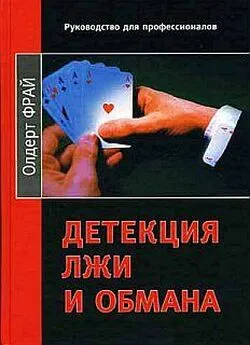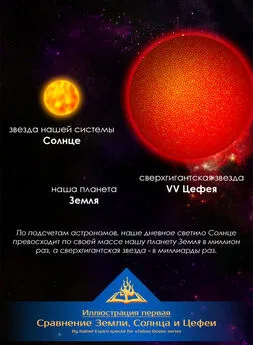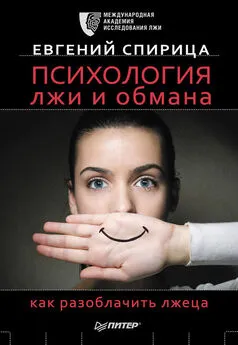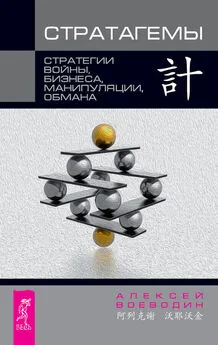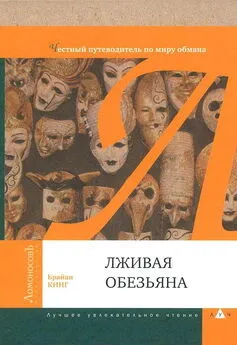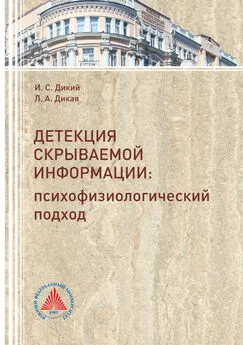Олдерт Фрай - Детекция лжи и обмана
- Название:Детекция лжи и обмана
- Автор:
- Жанр:
- Издательство:Издательский дом Нева ПРАЙМ-ЕРОЗНАК - Санкт-Петербург; ОЛМА-ПРЕСС - Москва
- Год:2005
- ISBN:5-93878-157-4
- Рейтинг:
- Избранное:Добавить в избранное
-
Отзывы:
-
Ваша оценка:
Олдерт Фрай - Детекция лжи и обмана краткое содержание
Как распознать ложь и обман в поведении и речи человека? Эти фундаментальные вопросы находят свое решение на страницах предлагаемого руководства. Без сомнения, эта книга — самый важный за последние годы вклад в теорию и практику психологии лжи и обмана. Впервые так полно и ясно представлены исследования психологических и физиологических показателей правдивого и лживого поведения и речи, а также — фактология использования метода детекции лжи и обмана с помощью полиграфа.
Эта книга принесет пользу всем, кто должен знать, говорят ли окружающие правду, и иметь практическое руководство, чтобы обеспечить себе это знание — для социальных и юридических психологов, криминалистов, политических консультантов и адвокатов.
Детекция лжи и обмана - читать онлайн бесплатно полную версию (весь текст целиком)
Интервал:
Закладка:
Сравнивайте поведение лжеца с его обычным поведением
Выявить тонкие невербальные признаки обмана нередко бывает легче, если распознающий ложь знаком с естественным поведением потенциального лжеца. В подобном случае проще нащупать (тонкие) изменения в поведении. Таким образом, определители лжи должны постараться лучше познакомиться с последним, поискать отклонения от этого «базисного поведения» и попытаться объяснить эти отклонения (они могут вызываться не теми причинами, по которым человек лжет). Однако данный «метод базисного сравнения» сработает лишь в случае, если сравнивать поведение предполагаемого обманщика с его же естественным поведением в одних и тех же условиях. Например, бесполезно сравнивать поведение подозреваемого, когда он отрицает свою причастность к преступлению, с его же поведением в процессе легкой вводной беседы ни о чем при начале допроса, так как подозреваемые (виновные и невиновные) наверняка поведут себя по-разному в ходе праздного разговора и перед лицом настоящего допроса (когда они пребывают под подозрением и ставки высоки) (Vrij, 1995). Честное сравнение состоит в сопоставлении поведения подозреваемого во время данного конкретного отрицания с его поведением по ходу другого отрицания, касающегося другого преступления (насчет которого искренность отрицания заведомо установлена).
В этой книге я попытался дать обзор психологических исследований и теорий, касающихся связи между обманом и невербальным поведением, содержанием речи и физиологическими реакциями, а также коснуться действий лиц, специально занимающихся раскрытием обмана. Вам остается решить, в какой мере сей труд является достойным и честным освещением перечисленного.
Литература
Akehurst, L. & Vrij, A. (1999). Creating suspects in police interviews. Journal of Applied Social Psychology, 29, 192–210.
Akehurst, L., Bull, R. & Vrij, A. (2000). Training British police officers, social workers and students to detect deception in children using criteria-based content analysis. Manuscript submitted for publication.
Akehurst, L., Kohnken, G. & Hofer, E. (1995). The analysis and application of Statement Validity Assessment. Paper presented at the Fifth European Conference on Psychology and Law, Budapest, Hungary.
Akehurst, L., Kohnken, G., Vrij, A. & Bull, R. (1996). Lay persons' and police officers' beliefs regarding deceptive behaviour. Applied Cognitive Psychology, 10, 461–411.
Allen, J.J. B. & lacono, W. G. (1991). A comparison of methods for the analysis of event-related potentials in deception detection. Psychophysiology, 34, 234–240.
Alonso-Quecuty, M. L. (1991). Post-event information and reality-monitoring: when the witness cannot be honest. Paper presented at the First Spanish and British Meeting on Psychology, Law and Crime in Pamplona, Spain.
Alonso-Quecuty, M. L. (1992). Deception detection and Reality Monitoring: a new answer to an old question? In F. Losel, D. Bender & T. Bliesener (Eds) , Psychology and law: international perspectives Berlin: Walter de Gruyter, 328–332.
Alonso-Quecuty, M. L. (1996). Detecting fact from fallacy in child and adult witness accounts. In G. Davies, S. Lloyd-Bostock, M. McMurran & С Wilson (Eds), Psychology, law and criminal justice: international developments in research and practice. Berlin: Walter de Gruyter, 14–80.
Alonso-Quecuty, M. L., Hernandez-Fernaud, E. & Campos, L. (1991). Child witnesses: lying about something heard. In S. Redondo, V Garrido, J. Perez & R. Barbaret (Eds), Advances in psychology and law. Berlin: Walter de Gruyter, 129–135.
Anolli, L. & Ciceri, R. (1991). The voice of deception: vocal strategies of naive and able liars. Journal of Nonverbal Behavior, 21, 259–284.
Anson, D. A., Golding, S. L. & Gully, K.J. (1993). Child sexual abuse allegations: reliability of criteria-based content analysis. Law and Human Behavior, 11, 331341.
Apple, W., Streeter, L. A. & Krauss, R. M. (1919). Effects of pitch and speech rate on personal attributions. Journal of Personality and Social Psychology, 31, 115–121.
Arntzen, E. (1982). Die Situation der Forensischen Aussagenpsychologie in der Bundesrepublik Deutschland. In A. Trankell (Ed.), Reconstructing the past: the role of psychologists in criminal trials. Deventer: Kluwer, 101–120.
Arntzen, F. (1983). Psychologic der Zeugenaussage: Systematik der Glaubwiirdig- keitsmerkmale. Munich: С. H. Beck. Aune, R. K., Levine, T. R., Ching, P. U. & Yoshimoto, J. M. (1993). The influence of perceived source reward value on attributions of deception. Communication Research Reports, 10, 15–21.
Backbier, E. & Sieswerda, S. (1991). Wanneer en waarom liegen we eigenlijk? NederlandsTijdschrift voorde Psychologie, 52, 255–264.
Barland, G. H. (1984). Standards for the admissibility of polygraph results as evidence. University of West Los Angeles Law Review, 16, 31–54.
Barland, G. H. (1988). The polygraph test in the USA and elsewhere. In A. Gale (Ed.), The polygraph test: lies, truth and science. London: Sage Publications, 13–96.
Bashore, T. R. & Rapp, RE. (1993). Are there alternatives to traditional polygraph procedures? Psychological Bulletin, 113, 3-22.
Baskett, G. D. & Freedle, R. O. (1914). Aspects of language pragmatics and the social perception of lying. Journal of Psycholinguistic Research, 3, 111–131.
Bell, B. E. & Loftus, E. F. (1988). Degree of detail of eyewitness testimony and mock juror judgments./oMrtta/ of Applied Social Psychology, 18, 1111–1192.
Bell, B. E. & Loftus, E. E. (1989). Trivial persuasion in the courtroom: the power of (a few) minor details. Journal of Personality and Social Psychology, 56,669–619.
Bell, K. L. & DePaulo, В. M. (1996). Liking and lying. Basic and Applied Social Psychology, 18, 243–266.
Ben-Shakhar, G. & Dolev, K. (1996). Psychophysiological detection through the Guilty Knowledge technique: effects of mental countermeasures. Journal of Applied Psychology, 81, 213–281.
Ben-Shakhar, G. & Furedy J.J. (1990). Theories and applications in the detection of deception. New York: Springer-Verlag.
Blaauw, J. A. (1911). 99 tips voor het verhoor. Algemeen Politie Blad , 120, 281–296.
Boelhouwer, A. J. W., Merckelbach, H. L. G. J., Van Koppen, P. J. & Verbaten, M. N. (1996). Leugendetectie in Nederland (Rapport aan Minister van Justitie). Tilburg: University of Tilberg.
Bond, C. F. & Fahey, W. E. (1981). False suspicion and the misperception of deceit. British Journal of Social Psychology, 26, 41–46.
Bond, C. E & Robinson, M. (1988). The evolution of deception. Journal of Nonverbal Behavior, 12, 295–301.
Bond, C. E, Kahler, K.N. & Paolicelli, L. M. (1985). The miscommunication of deception: an adaptive perspective. Journal of Experimental Social Psychology, 21, 331–345.
Bond, С. E, Omar, A., Mahmoud, A. & Bonser, R.N. (1990). Lie detection across cultures. Journal of Nonverbal Behavior, 14, 189–205.
Bond, С.Е., Omar, A., Pitre, U., Lashley, B.R., Skaggs, L.M. & Kirk, C.T. (1992). Fishy-looking liars: deception judgment from expectancy violation. Journal of Personality and Social Psychology, 63, 969911.
Boychuk, T. (1991). Criteria-Based Content Analysis of children's statements about sexual abuse: a field-based validation study. Unpublished doctoral dissertation, Arizona State University, Tempe, AZ.
Bradley, M.T.& Janisse, M.P. (1981). Accuracy demonstrations, threat, and the detection of deception: cardiovascular, electrodermal and pupillary measures. Psychophysiology, 18, 301–315.
Bradley, M.T., MacLaren, V.V. & Black, M.E. (1996). The control question test in polygraphic examinations with actual controls for truth. Perceptual and Motor Skills, 83, 155–162.
Brandt, D.R., Miller, G.R. & Hocking, J.E. (1980a). The truth-deception attribution: effects of familiarity on the ability of observers to detect deception. Human Communication Research, 6, 99-110.
Brandt, D.R., Miller, G.R. & Hocking, J.E. (1980b). Effects of self-monitoring and familiarity on deception detection. Communication Quarterly, 28, 3-10.
Brandt, D.R., Miller, G.R. & Hocking, J.E. (1982). Familiarity and lie detection: a replication and extension. The Western Journal of Speech Communication, 46, 216–290.
British Psychological Society (1986). Report of the Working Group on the use of the polygraph in criminal investigation and personnel screening. Bulletin of the British Psychological Society, 39, 81–94.
Brooks, C.I., Church, M.A. & Fraser, L. (1986). Effects of duration of eye contact on judgments of personality characteristics. The Journal of Social Psychology, 126, 11–18.
Brougham, C.G. (1992). Nonverbal communication: can what they don't say give them away? FBILaw Enforcement Bulletin, 61, 15–18.
Bull, R. (1988). What is the lie-detection test? In A. Gale (Ed.), The polygraph test: lies, truth and science. London: Sage Publications, 10–19.
Читать дальшеИнтервал:
Закладка:
